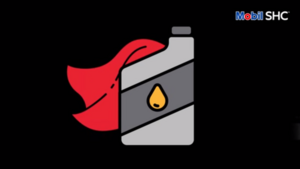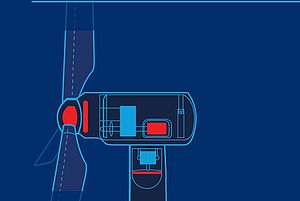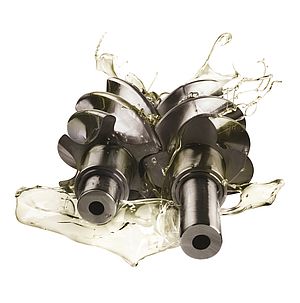Risks are inherent in mechanical maintenance. But the risks can be even greater in applications that, by nature, operate in extreme conditions.
Take wind turbines. Wind turbines are particularly challenging to maintain, given the tight quarters and great heights of the gearboxes.
So what can operators do to reduce the safety risks associated with wind turbine maintenance?
There are two major changes that operators can implement to reduce instances of human machine interactions (HMI) in wind turbine maintenance:
- Convert operations to a high-performance synthetic turbine gearbox lubricant
- Implement a routine gearbox oil analysis program
Choosing the right oil
A high-performance synthetic gearbox oil can go a long way toward protecting gearbox components from wear, thus reducing the need for HMI.
It wasn't very long ago that wind turbine gearbox oil had an expected service life of only 18 months. But today, advanced gearbox oils have been shown to last from five to seven years in continuous service.
One example is ExxonMobil's long life Mobil SHC Gear 320 WT advanced wind turbine gear lubricant. This oil has been formulated to resist micropitting of modern, case hardened gearing and can operate in both high and low temperature environments. ExxonMobil are so confident in the durability of this product that they offer a 7 year extended warranty†.
Monitoring oil condition
In addition to selecting the right oil, implementing a routine oil analysis program is crucial to ensuring successful operations and reducing maintenance procedures.
By taking a proactive approach to maintenance and regularly sampling the gearbox oil, operators can identify turbine reliability issues and lubricant degradation before they cause critical equipment failure.
To help operators in this area, ExxonMobil recently launched Mobil Serv℠ Lubricant Analysis. This new service is designed to streamline the entire used oil analysis process from initial sample gathering to final reporting.
It allows customers to easily deliver used oil samples to ExxonMobil's oil analysis laboratory using scan-and-go technology with QR Codes. They can then access results and customised equipment recommendations on mobile or tablet devices using a cloud-based app.
All of which can help enhance safety by reducing the need for maintenance personnel to interact with equipment.
†Subject to the terms and conditions of the warranty, the company will bear any costs required and adequate to repair











































